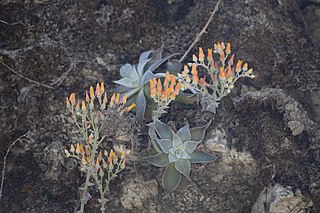
The Wakhan Corridor is a narrow strip of territory located within the Badakhshan province of Afghanistan. This corridor stretches eastward, connecting Afghanistan to Xinjiang, China. It also separates the Gorno-Badakhshan Autonomous Region of Tajikistan in the north from northern Pakistan in the south. This high mountain valley serves as the source of both the Panj and Pamir rivers, which converge to form the larger Amu River. For countless centuries, a vital trade route has traversed this valley, facilitating the movement of travelers to and from East, South, and Central Asia.

Elaeagnus angustifolia, commonly called Russian olive, silver berry, oleaster, or wild olive, is a species of Elaeagnus, native to western and central Asia, Iran, from southern Russia and Kazakhstan to Turkey, parts of Pakistan and parts of India. It is widely established in North America as an introduced species.

The Marco Polo sheep is a subspecies of argali sheep, named after Marco Polo. Their habitat are the mountainous regions of Central Asia. Marco Polo sheep are distinguishable mostly by their large size and spiraling horns. Their conservation status is "near threatened" and efforts have been made to protect their numbers and keep them from being hunted. It has also been suggested that crossing them with domestic sheep could have agricultural benefits.

Ishkashimi is an Iranian language spoken by Ishkashimi people who live predominantly in the Badakhshan Province in Afghanistan and in Gorno-Badakhshan Autonomous Region in Tajikistan.
Ulmus chumlia is a small deciduous tree endemic to the Himalaya from the Kashmir to central Nepal, and the provinces of Yunnan, Sichuan and Xizang (Tibet) in China. It is found in broadleaf forest on mountain slopes at elevations of 1000–3000 m. Richens noted that the species appeared to be the same as that named by Grudzinskaya as Ulmus androssowii var. virgata, which she considered an intermediate between U. minor and U. pumila.

The large-billed reed warbler is an Old World warbler in the genus Acrocephalus. The species has been dubbed as "the world's least known bird". It was known from a single specimen collected in India in 1867 and rediscovered in the wild in Thailand in 2006. The identity of the bird caught in Thailand was established by matching DNA sequences extracted from feathers; the bird was released. After the rediscovery in the wild a second specimen was discovered amid Acrocephalus dumetorum specimens in the collections of the Natural History Museum at Tring. A breeding area was found in Afghanistan in 2009 and studies in 2011 pointed to its breeding in Kazakhstan and Tajikistan. One bird was found in the Baikka Wetland in Srimangal, Bangladesh on 7 December 2011.

Gynaephora is a genus of "tussock moths", also known as the Lymantriinae, within the family Erebidae. They are mainly found in the Holarctic in alpine, Arctic and Subarctic regions, and are best known for their unusually long larval development period. The life-cycle of Gynaephora groenlandica was once believed to take fourteen years, but subsequent studies reduced it to seven, still a very slow development rate that is extremely rare in the Lepidoptera. The caterpillars have five instars, with each instar lasting a year.
Lachana is a genus of moths in the subfamily Lymantriinae. The genus was described by Frederic Moore in 1888. It contains species native to alpine areas on high mountains in the south of the Central Asia. The females do not have wings and lay their eggs within their own old cocoons.
Vermilacinia, a genus of lichenized fungi in the family Ramalinaceae, is a yellow-green fruticose type of lichen with about 30 species that grow on rocks, trees, and soil within the fog zone along the Pacific Coast of North America and South America. The genus name refers to the thallus being divided into narrow worm-like (vermis) branches (lacinia);the latter part of the name (lacinia) generally applied in descriptions and taxonomic keys such as exemplified in a key to Sonoran Desert species of Ramalina.

Gynaephora groenlandica, the Arctic woolly bear moth, is an erebid moth native to the High Arctic in the Canadian archipelago, Greenland and Wrangel Island in Russia. It is known for its slow rate of development, as its full caterpillar life cycle may extend up to 7 years, with moulting occurring each spring. This species remains in a larval state for the vast majority of its life. Rare among Lepidoptera, it undergoes an annual period of diapause that lasts for much of the calendar year, as G. groenlandica is subject to some of the longest, most extreme winters on Earth. In this dormant state, it can withstand temperatures as low as −70 °C. The Arctic woolly bear moth also exhibits basking behavior, which aids in temperature regulation and digestion and affects both metabolism and oxygen consumption. Females generally do not fly, while males usually do.
Lachana alpherakii is a species of moth of the subfamily Lymantriinae first described by Grigory Grum-Grshimailo in 1891. It is found in the high mountains of Tibet and China.
Lachana ladakensis is a species of moth of the subfamily Lymantriinae. It is found in the mountains of Ladakh, in Kashmir in northwestern India.
Lachana selenophora is a species of moth of the subfamily Lymantriinae. It is found in alpine habitats on the high mountains in Central Asia.
Lachana kulu is a species of moth of the subfamily Lymantriinae from northern India seen once in 1913.

Dicallomera is a genus of tussock moths in the family Erebidae.
Dicallomera pumila is a little seen species of moth of the family Erebidae found in mountains in Kazakhstan and in the southern Urals.

Rheum maximowiczii is a large herbaceous perennial plant species in the genus Rheum (rhubarbs) from the mountains of Central Asia where it grows in Kazakhstan, eastern Uzbekistan, Tajikistan, Kyrgyzstan and northeastern Afghanistan.
Iris alexeenkoi is a plant species in the genus Iris, it is also in the subgenus Iris. It is a rhizomatous perennial, from the Caucasus mountains in Azerbaijan. It has green or greyish grass-like leaves, a short slender stem and 1–2 flowers that come in shades of purple, violet, purple-blue, or blue. It is closely related to Iris pumila. It is rarely cultivated as an ornamental plant in temperate regions.
Gynaephora rossii, in English known as Ross' tussock moth, is a species of tussock moth in the family Erebidae. It is widespread in the tundras and highlands of the Holarctic. It has large, furry caterpillars which seem to eat mostly saxifrages.

Dudleya cymosasubsp. pumila, most commonly known as the low canyon dudleya, chalky canyon dudleya or California live-forever, is a species of perennial succulent plant. It has diamond to spoon shaped leaves, sometimes coated with a fine white powder, and in May through July, bright red, orange or yellow flowers adorn the short inflorescence. A leaf succulent primarily found growing in rocky cliffs and slopes, it is endemic to California, and grows in the Transverse Ranges and South Coast Ranges, with some outlying populations. A variable plant, in some localities it is difficult to distinguish from other plants in the genus.










